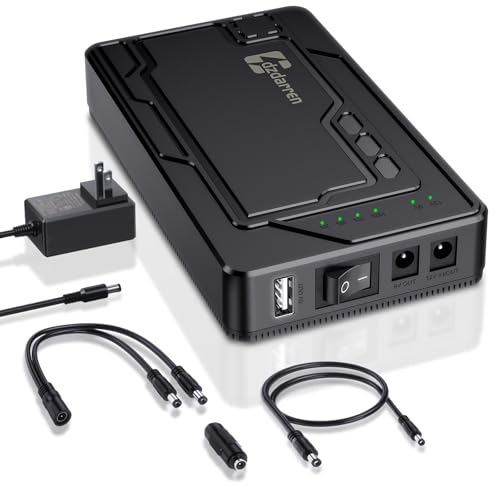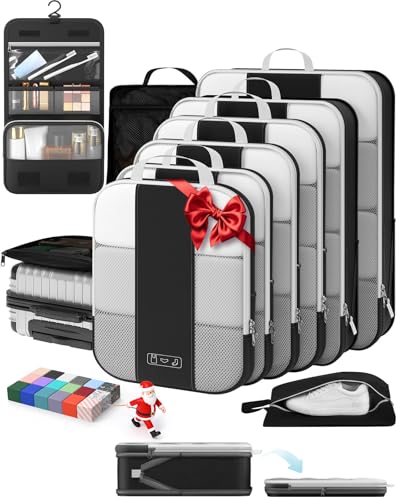






Recommendation: Never stow spare lithium cells or power packs in the aircraft hold – keep all spare units and power banks in your cabin carry-on with terminals insulated or in original packaging.
Regulatory thresholds (quick reference): lithium-ion cells up to 100 Wh per cell are generally permitted in the cabin without prior approval; cells greater than 100 Wh and up to 160 Wh require airline approval and are typically limited to two spare units per passenger; cells exceeding 160 Wh are prohibited on passenger aircraft. For lithium metal (primary) cells the lithium content limit is 2 g per cell; cells above that value are forbidden.
Installed cells vs spare units: Power sources that remain installed in devices (phones, laptops, cameras) are usually accepted in either cabin or the aircraft hold by international rules, but many carriers require that high-capacity devices travel in the cabin. Spare, loose, or external units (power banks, loose cells) must travel in the cabin only.
How to check capacity: Read the manufacturer label for watt-hours (Wh). If the label shows milliamp-hours (mAh) and voltage (V), calculate Wh = (mAh × V) / 1000. Examples: typical smartphone ≈10–15 Wh; mainstream laptop ≈40–100 Wh; a 20,000 mAh power bank at 3.7 V ≈74 Wh.
Packing steps for cabin carriage: 1) Leave spare units outside devices; 2) Insulate terminals with tape or keep in original retail packaging; 3) Place each spare in separate plastic sleeves or protective pouches to prevent short circuits; 4) Declare and get airline approval for units between 100–160 Wh and carry documentation showing Wh rating.
Practical checks before travel: Verify the operator’s specific policy and any national aviation authority bulletins for the route; airlines may impose stricter limits than international rules. At screening or check-in present devices and spares on request; removable cells should be removed from checked bags and moved to cabin carry-on.
Which chemistries are prohibited or restricted in the aircraft hold?
Avoid placing lithium‑metal (primary) cells with more than 2 g elemental lithium, and spare lithium‑ion packs (power banks/loose cells), in the aircraft hold; aviation rules require these items to travel in the cabin or be consigned as dangerous goods via cargo with proper documentation.
Lithium chemistries – concrete limits and handling
Lithium‑ion (rechargeable): Cells/packs up to 100 Wh are generally permitted in the cabin and may remain installed in devices; spare (loose) packs must travel in carry‑on. Cells between 100 Wh and 160 Wh require prior carrier approval and are limited (typically two units per passenger). Cells above 160 Wh are forbidden on passenger aircraft unless shipped as cargo under dangerous‑goods procedures.
Lithium‑metal (primary, non‑rechargeable): Any cell containing more than 2 g of elemental lithium per cell is forbidden on passenger aircraft. Cells with ≤2 g are usually allowed in the cabin only; spare primary cells should be carried in hand baggage with terminals insulated.
Other chemistries and special cases
Alkaline, NiMH and NiCd cells/packs (AA, AAA, rechargeable packs): Generally permitted in both cabin and hold when installed in equipment; loose cells should have terminals taped or remain in original packaging to prevent short circuits.
Sealed lead‑acid (SLA) and large industrial packs: Installed SLAs in equipment are often accepted if terminals are protected and the unit is secured; loose wet/flooded lead‑acid and large industrial traction packs typically require carrier approval and dangerous‑goods handling, and may only travel as cargo. Fuel‑cell cartridges and other chemical power sources have operator‑specific restrictions and usually need prior approval.
Practical steps: keep spare cells/packs in carry‑on; insulate terminals (tape, individual plastic bags, original packaging); label or declare any item >100 Wh or >2 g lithium to the carrier; obtain written carrier approval for 100–160 Wh items or for large lead‑acid/industrial units and follow the shipper’s dangerous‑goods instructions.
Lithium capacity limits (Wh and lithium metal content) for aircraft hold
Keep lithium-ion cells under 100 Wh per cell when placing devices in the aircraft hold; spare cells and loose packs should travel in the cabin (carry-on) only.
Rechargeable lithium‑ion packs – thresholds and handling: ≤100 Wh per pack: installed in equipment may travel in cabin or the hold; loose/spare packs are cabin‑only. >100 Wh up to 160 Wh: airline approval required and typically limited to two spare packs per passenger; cabin‑only. >160 Wh: carriage via passenger service is prohibited; transport requires cargo shipment under dangerous-goods rules with special packaging, labeling and documentation.
Lithium‑metal (primary) cells – elemental lithium content guidance: cells with ≤2 g of elemental lithium per cell (or batteries with total lithium content ≤8 g) are generally accepted in passenger carriage when installed in equipment; loose/spare lithium‑metal cells are normally restricted to cabin. Cells with lithium content above the lower threshold require explicit carrier approval and quantities are limited; cells/batteries exceeding the higher threshold must travel as cargo under dangerous‑goods provisions.
Practical steps: check Wh markings on packs (manufacturer label or datasheet), carry written proof of Wh or lithium content for any pack >100 Wh, insulate terminals, keep packs in original packaging or taped terminal covers, limit spare pack count to airline limits, and verify carrier-specific rules before travel.
For unrelated gear sourcing and size examples that help determine pack handling, see best budget pressure washer australia.
Packing devices with installed power cells for aircraft hold
Keep devices with installed power cells in hand baggage whenever feasible; if they must travel in the aircraft hold, follow these exact steps.
Preparation
Power each device down completely and disable auto-start, alarms and wake-on-motion features; remove chargers and detachable accessories that could press against the device during transit.
If the power module is removable, extract it and carry it in the cabin inside an insulated pouch; for built-in power cells, cover exposed terminals with Kapton tape, electrical tape or original terminal caps to prevent short circuits.
Set state of charge for rechargeable cells to roughly 30–50% prior to travel to reduce stored energy during transit; ensure devices remain cool and dry before packing.
Packing technique
Place each device in its original box or a padded sleeve, surround with at least 5 cm of soft material (foam or clothing) and position in the center of a hard-shell suitcase away from heavy or sharp items; avoid stacking devices in direct contact.
Prevent accidental activation by locking screens, disabling quick-start gestures and securing physical switches with tape or a locking cable; seal compartments with tamper-evident tape where permitted so security inspections can be performed without damage.
Distribute multiple devices across separate suitcases when possible and label the bag contents per airline instructions; keep one device accessible in the cabin for inspection requests and confirm airline and airport security packaging and declaration requirements before check-in to prevent removal or delays at the gate.
Handling spare cells: carry-on requirements and permitted exceptions
Immediate recommendation
Keep all spare lithium-ion and lithium-metal cells/power packs in the cabin carry-on and never stow them in the aircraft hold; protect terminals (tape, caps, original retail packaging) and notify the airline for any pack exceeding 100 Wh or any cell with >2 g lithium metal.
Packaging, marking and transport limits
Terminal protection: cover exposed terminals with electrical tape, use original manufacturer boxes or individual plastic pouches, and prevent contact between spare units and metal objects. Place spares in an accessible compartment of the cabin bag for inspection. For power packs, display the Wh rating on the unit; when only mAh is printed, convert using Wh = (mAh × V) / 1000 (example: 10,000 mAh × 3.7 V = 37 Wh).
Capacity and approval rules (ICAO/IATA baseline accepted by most carriers): rechargeable lithium-ion packs ≤100 Wh per cell/pack – permitted in cabin without prior airline approval; lithium-ion >100 Wh up to 160 Wh – require airline approval and are typically limited to two spare packs per passenger; lithium-ion >160 Wh – prohibited on passenger aircraft. Lithium-metal (primary) cells with ≤2 g lithium content per cell – permitted in cabin without prior approval; >2 g up to 8 g – require airline approval and are usually limited to two spare cells; >8 g – prohibited.
Declaration and airline policies: when a spare pack or cell falls into the approval range, contact the carrier before travel, provide Wh or lithium content data, and secure written confirmation if the carrier grants permission. Carriers may impose stricter limits than the ICAO baseline: check the airline’s dangerous-goods page for per-passenger quantity caps and packaging specifics.
Airline and country-specific rules: how to verify limits and declare power cells at check-in
Confirm carrier and national aviation regulator requirements at least 72 hours before departure: collect device model, cell chemistry, voltage and ampere‑hour (Ah) values, calculate watt‑hours (Wh) when needed, and obtain written carrier approval for items requiring prior authorization.
How to verify limits before travel
- Check the airline’s “dangerous goods” or “special items” webpage for portable power policies; search the carrier site for terms such as “lithium”, “portable power”, “power pack” or “dangerous goods”.
- Consult the origin and destination civil aviation authority guidance (examples: FAA, EASA, Transport Canada) for national deviations from IATA rules and for transit-country restrictions.
- Calculate Wh when label missing: Wh = V × Ah. Keep this value on a printout or phone screenshot for inspection.
- Request written confirmation from the carrier if Wh or cell chemistry may trigger restrictions; email support with device photos and the manufacturer spec sheet, then keep the reply printed.
- For freight or shipment alternatives, contact the carrier’s cargo/dangerous-goods desk; freight requires UN numbers, approved packaging and shippers’ declarations.
- Use a rugged protective case for devices and spare packs; comparison shopping tips available at best luggage compaies.
How to declare items at check-in
- Approach the ticket counter or the airline’s ground dangerous-goods desk during check-in; present the device, spare packs and printed technical data (Wh, voltage, manufacturer spec sheet).
- Provide any prior written approval from the carrier; hand the printed email or PDF to the agent. If approval missing, request on-the-spot escalation to dangerous-goods staff.
- When the agent accepts the item for placement in the aircraft hold, ask for documentation or a tag that confirms acceptance under the carrier’s dangerous‑goods procedure.
- If the agent refuses acceptance for hold carriage, offer alternatives: remove the power pack to carry in the cabin if permitted, postpone shipment, or arrange air freight with proper DG paperwork.
- Keep copies of all communications and labels until final delivery. Customs or airport security may request the same documents during transit.
Checklist to bring to the airport:
- Manufacturer specification sheet (printed)
- Calculated Wh values and how they were derived
- Any written carrier approvals or airline support emails (printed)
- Original retail packaging or device labelling (if available)
- Contact phone number for airline dangerous-goods office
Sample short declaration lines for the agent: “I have a portable power pack with technical sheet and carrier approval; requesting acceptance for placement in the aircraft hold.” Carry a compact rain cover and quick-fold umbrella for last-minute delays; recommendations at best umbrella for rainy season.







